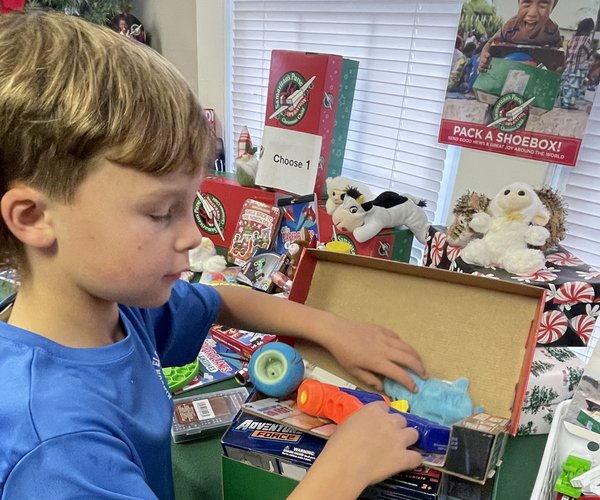By Barbara Augsdorfer, Editor for the Effingham Herald
Chinese philosopher Lao Tzu once said, “The journey of a thousand miles begins with a single step.” But Tzu didn’t mention any of the obstacles in the way such as being Black, graduating from a segregated “equalization” school; being the only person of color in his medical-school class; and embarking on his medical career at the beginning of the HIV/AIDS epidemic in 1980.
For Dr. Henry Young, 74, a family practice physician in Cordele, the journey from Springfield’s Central High School spans years of hard work, determination, and a little luck.
“I’m working here in my office still, and I do emergency medicine two nights a week and weekends,” He visits nursing homes and does geriatric care. Dr. Young said, “I've slowed down a lot, but I still stay active.”
A personal tragedy while he was growing up steered him to look into a medical career.
“I grew up in Effingham County. The thing that really was disappointing that we didn't have any local health care providers or facilities in that area. My oldest brother drowned, and there was nothing they do about that,” Dr. Young recalled. “And that put a little desire in me to do something to be able to come back to Effingham County and provide health care for the city and the community back then.”
Dr. Young still has ties to Effingham County. His sister Ella Bacon lives in their family home in Clyo.

“Most of my time was overseas,” Dr. Young explained. “I was in the Philippines for a year; and in the Vietnam War, I was there for a year, too.”
While in the Air Force he attended the University of Northern Michigan and also the University of the Philippines. He had almost two years of college completed when he was discharged. He used the GI Bill to complete his college education.
“I went to Georgia Southern. I always liked chemistry and I liked (Georgia Southern’s) major in medical technology,” Dr. Young continued. He was accepted into a program with Emory and Georgia State.
While he was working on his master’s degree in biochemistry, he recalls meeting some of the medical students from Emory University.
Up until this point he hadn’t thought about medical school, but then realized medical students were just as human as him.
“They (the medical students) would come down (to the hospital) to ask questions, and I was thinking, ‘Goodness, this person at Emory, one of the most prestigious universities, and I think I know more than he does’,” Dr. Young recalled. “That's when I first was exposed to medicine because I had no idea. It was like something that we always put on a pedestal that we can't reach.
“But then when I really get to know the medical students, I found that they're not that special in terms of their ability to assimilate all this information and to use it,” Dr. Young said.
He applied to Emory, Medical College of Georgia, Howard University, among others and was accepted by two, including MCG.
“I liked MCG because of the atmosphere. The people there seem to be down the earth and really identify that country style living. So, I went there,” Dr. Young continued. “I had a scholarship along with the GI Bill, so it worked out fine.”
One of the challenges Dr. Young faced at MCG when he started in 1976 was that the school accepted only 180 students each year, and almost no students of color.
“When I got there, I looked around and I was the only person of color in the class,” Dr. Young said. But even as the only Black student, he forged friendships that are still strong today. “We kept in contact and everything. It was an experience, but it was good.”

“Sometimes people would say, ‘How did you do that?’ and I would say, ‘I guess I’m lucky,’ but it wasn’t that hard for me to make A’s during that time,” Dr. Young said.
Even as a med student, Dr. Young was also a teacher.
“Morehouse (College) was beginning their med school. We did an internship for their students,” Dr. Young said. “We had them to come in. We talked with them and we tried to show them what the first year was going to be like and what was expected of them.”
After he graduated from medical school he was looking to open a practice around the Fort Stewart area, but ended up in Cordele, where he’s been since 1980.
Dr. Young recalls, “I stopped in Crisp County, and they invited me to come work in the emergency room department for one weekend. And one of the EMS took me to their church. There was a lady, she was like 80 or 90, she said, ‘You'll be back,’ and looking at her and I said, ‘I’m supposed to be in Hinesville.’ She was right, I did come back.”
The prominent medical crisis in the 1980s was the prevalence of HIV. At the time no one was really sure what it was, what caused it, or how it was spread.
“It was really difficult because people just would not take care of HIV patients. And it was just as strange because when we went to the hospital, I had one nurse that would go into a room with me, but everybody else was like, ‘Hey, I'm not going in there.’,” Dr. Young recalled.
Over time, though, the public was educated about HIV, which began to dismantle the stigma and increase understanding.
“We did HIV seminars with all the churches and the community clubs here. And that was one of the things I was really proud of,” Dr. Young explained. “I could see the change over time of people accepting the HIV population. And I still have a fairly large HIV population.”
His current clinical interest is the comprehensive treatment of HIV in adolescents and adults.
Dr. Young and his wife Glenda will celebrate their 50th anniversary on March 16. They have two daughters -- Nyidra Young and Nicole Y. Whalen; one son, Dr. Henry W. Young II, who is an emergency room doctor in Columbus, Ohio; and four grandchildren.





